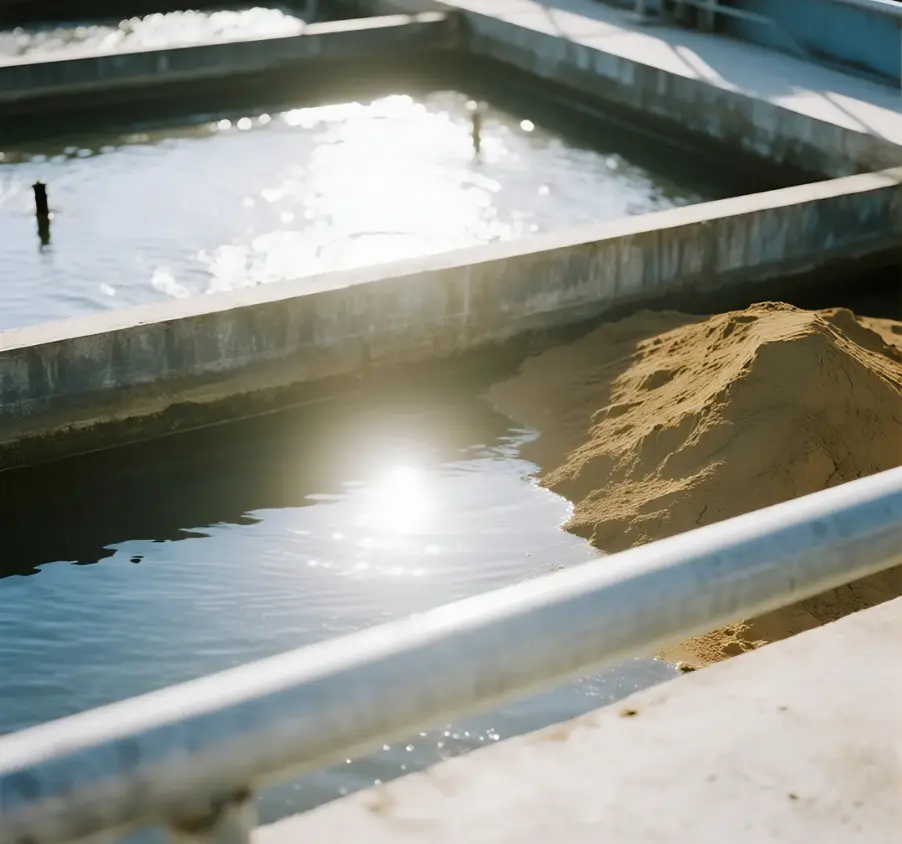Introduction
Wastewater treatment is a critical issue in industries globally, with increasing pressure to reduce toxic contaminants in water sources. Among various treatment methods, pyrite powder has proven to be a highly effective and cost-efficient solution. Pyrite (FeS₂), a naturally occurring mineral, serves as an efficient catalyst in degrading organic pollutants like phenol and removing heavy metals such as lead. In this article, we delve into how pyrite powder offers an affordable, sustainable solution for industrial wastewater treatment, supported by experimental data and case studies.

What is Pyrite Powder and How Does It Work in Wastewater Treatment?
Pyrite powder, composed of iron and sulfur, acts as a catalyst that facilitates the degradation of organic pollutants and heavy metals in wastewater. When combined with hydrogen peroxide (H₂O₂), pyrite generates hydroxyl radicals (·OH), which are highly reactive and capable of breaking down harmful compounds, such as phenol and heavy metals like lead. This catalytic process makes pyrite powder a reliable choice for water purification in various industrial applications.
1. Pyrite Powder for Organic Pollutant Degradation: Phenol Removal
Removing organic pollutants like phenol is a significant challenge in wastewater treatment. Phenol is toxic and can adversely affect aquatic life, making its removal crucial for environmental protection.
Experiment Summary:
- Pollutant: Phenol concentration of 100 mg/L
- Catalyst: Pyrite powder (50 µm, 10 g/L)
- Conditions: 5 mM H₂O₂, temperature of 25°C, reaction time of 120 minutes
- Analysis Method: HPLC (High-Performance Liquid Chromatography)
Key Results:
- 30 minutes: Phenol concentration reduced to 42 mg/L
- 60 minutes: Further reduction to 18 mg/L
- 120 minutes: Complete reduction to 2 mg/L, achieving a 98% removal rate
Analysis: The use of pyrite powder results in a 98% phenol removal within 120 minutes, highlighting its efficiency in treating industrial wastewater.
2. Heavy Metal Removal: Lead (Pb) Reduction
Lead contamination in wastewater is a critical environmental concern. The ability of pyrite powder to effectively remove heavy metals like lead makes it a valuable tool for water purification.
Experiment Summary:
- Pollutant: Lead concentration of 200 mg/L
- Catalyst: Pyrite powder (100 µm, 5 g/L)
- Conditions: pH 6, temperature of 20°C, reaction time of 180 minutes
- Analysis Method: Atomic Absorption Spectroscopy (AAS)
Key Results:
- 30 minutes: Lead concentration decreased to 150 mg/L
- 60 minutes: Reduced to 85 mg/L
- 180 minutes: Lead concentration lowered to 10 mg/L, achieving a 95% removal rate
Analysis: Pyrite powder efficiently removes heavy metals from water by forming lead sulfide (PbS) precipitates, achieving a 95% removal rate, making it an effective solution for lead-contaminated water.
3. Reusability of Pyrite Powder
A key advantage of pyrite powder is its reusability, which enhances its cost-effectiveness. Pyrite can be reused several times without a significant loss in performance, making it a sustainable option for long-term wastewater treatment.
Experiment Summary:
- Pollutant: Phenol concentration of 100 mg/L
- Catalyst: Pyrite powder (50 µm, 10 g/L)
- Conditions: 5 mM H₂O₂, temperature of 25°C, reaction time of 120 minutes
- Repeated Usage: Cleaning and reusing pyrite powder for multiple cycles
Key Results:
- First Cycle: 98% removal rate
- Second Cycle: 95% removal rate
- Fifth Cycle: 88% removal rate
Analysis: Pyrite powder retains high catalytic efficiency over several cycles, demonstrating its sustainability and cost-effectiveness for ongoing wastewater treatment.
4. Comparison with Other Catalysts: Pyrite Powder vs. Fe³⁺ and TiO₂
To further evaluate pyrite powder's performance, it was compared with other common catalysts like Fe³⁺ and TiO₂.
Experiment Summary:
- Pollutant: Phenol concentration of 100 mg/L
- Catalysts Tested: Pyrite powder, Fe³⁺, TiO₂ (same mass concentration)
- Conditions: 5 mM H₂O₂, temperature of 25°C, and reaction time of 120 minutes
Key Results:
- Pyrite Powder: 98% phenol removal
- Fe³⁺: 90% phenol removal
- TiO₂: 85% phenol removal
Analysis: Pyrite powder outperforms Fe³⁺ and TiO₂ in terms of both efficiency and cost-effectiveness, positioning it as the superior choice for wastewater treatment.
The Advantages of Pyrite Powder in Wastewater Treatment
In summary, pyrite powder offers a highly effective and cost-efficient solution for wastewater treatment. Its remarkable ability to degrade organic pollutants like phenol and remove heavy metals such as lead makes it an ideal choice for industrial and municipal wastewater treatment applications. The reusability and low cost of pyrite powder further enhance its value as a sustainable solution.
With 98% removal rates for phenol and 95% for lead, pyrite powder proves to be an invaluable tool in the battle against water contamination. Future research may focus on improving its long-term stability and catalytic efficiency to meet the increasing demands of global water treatment.
